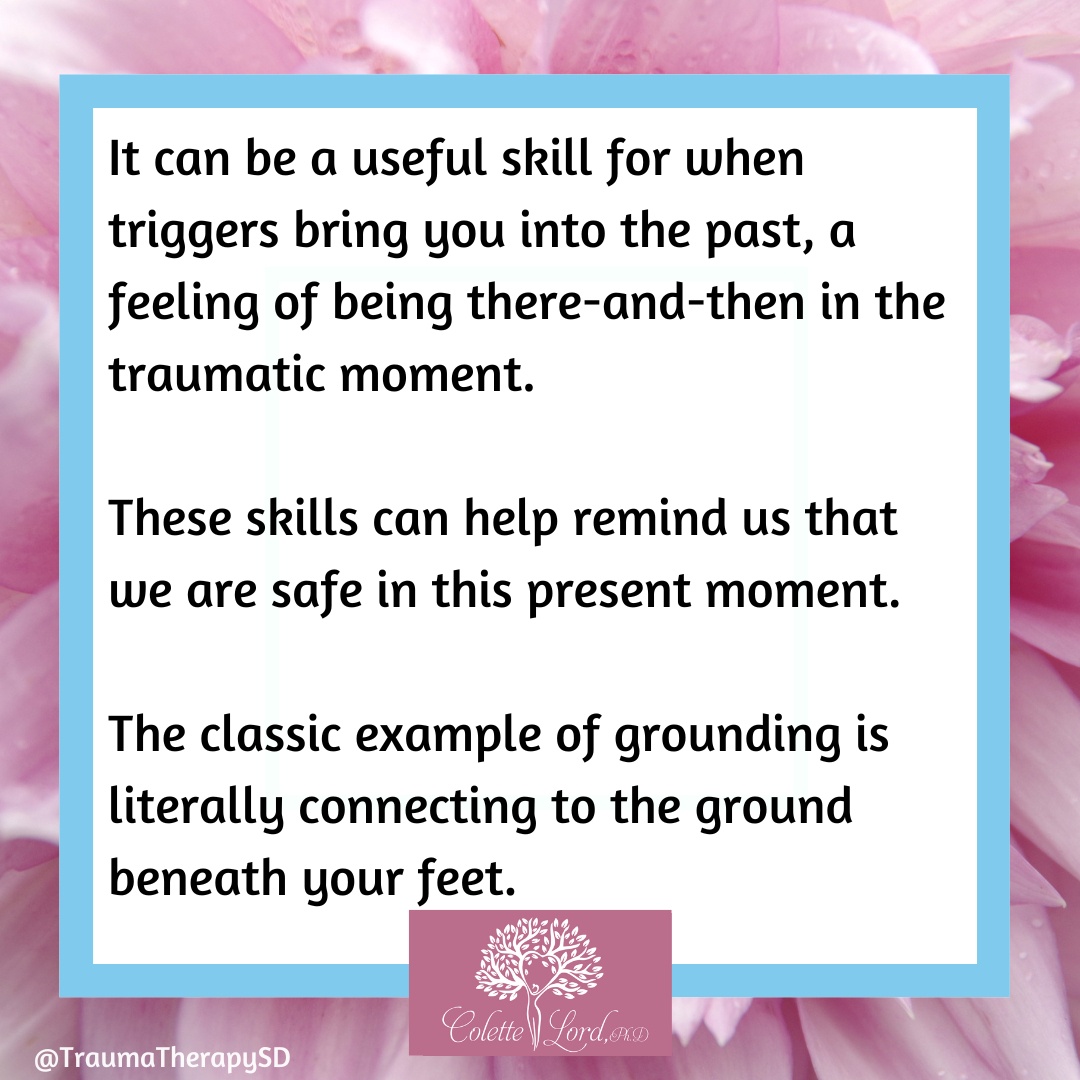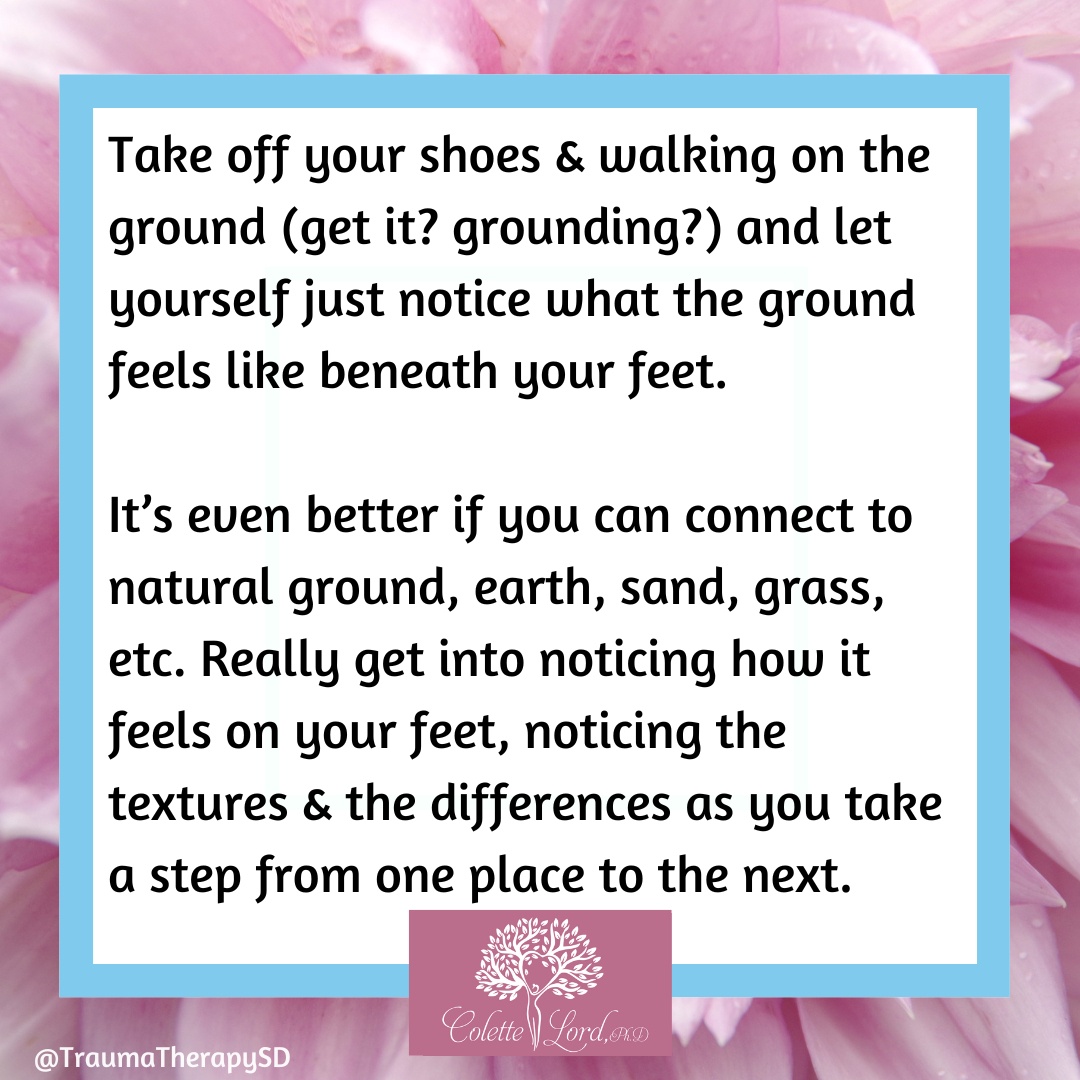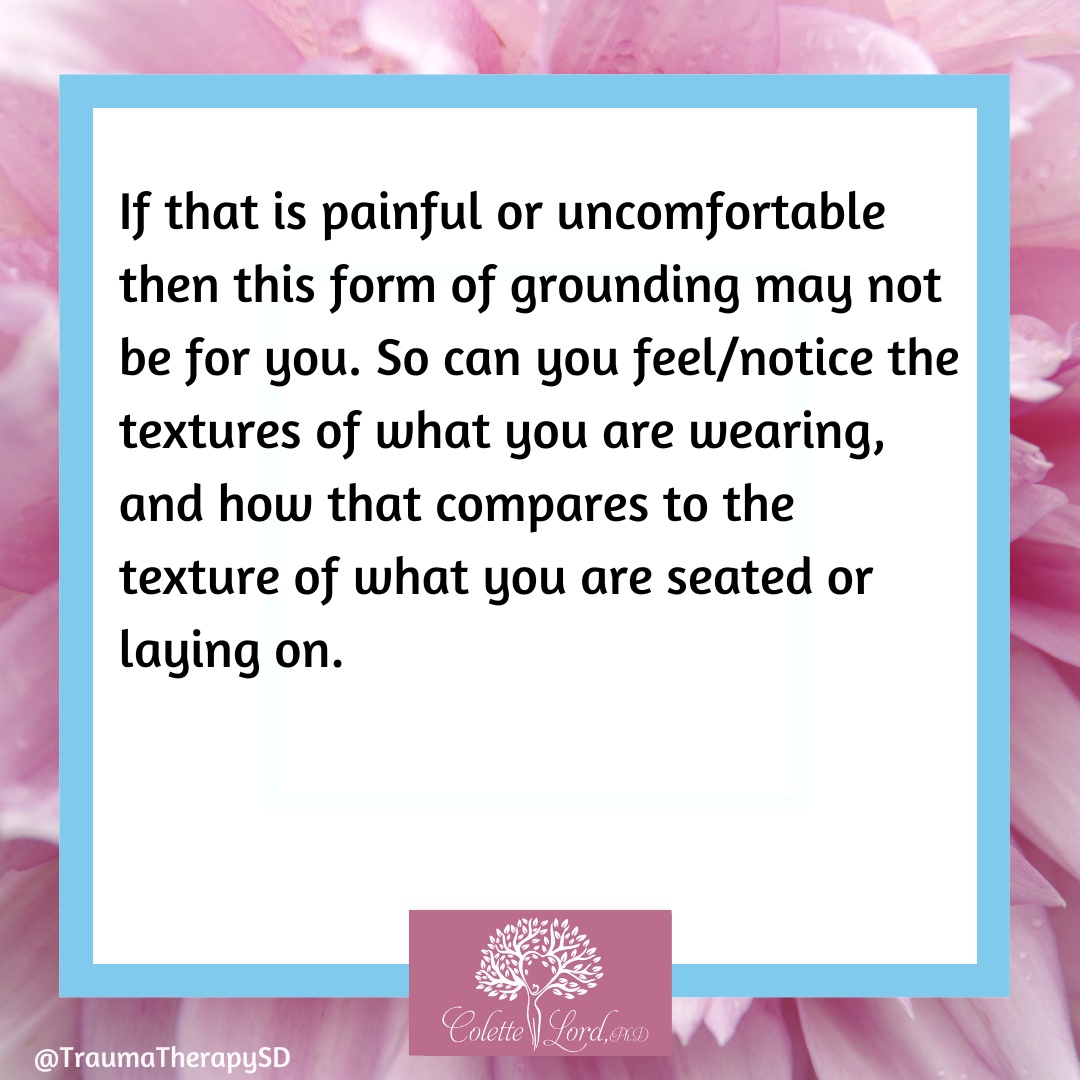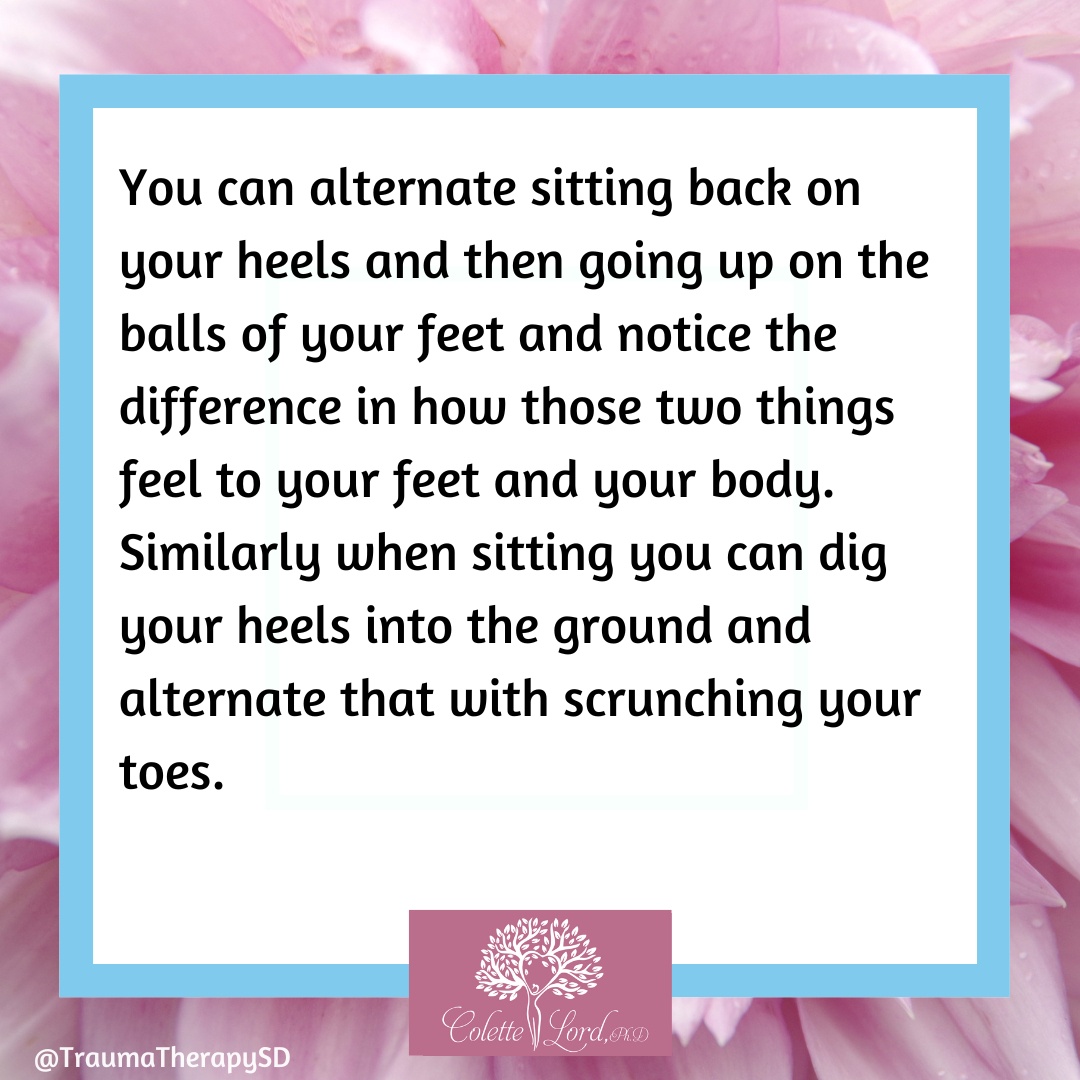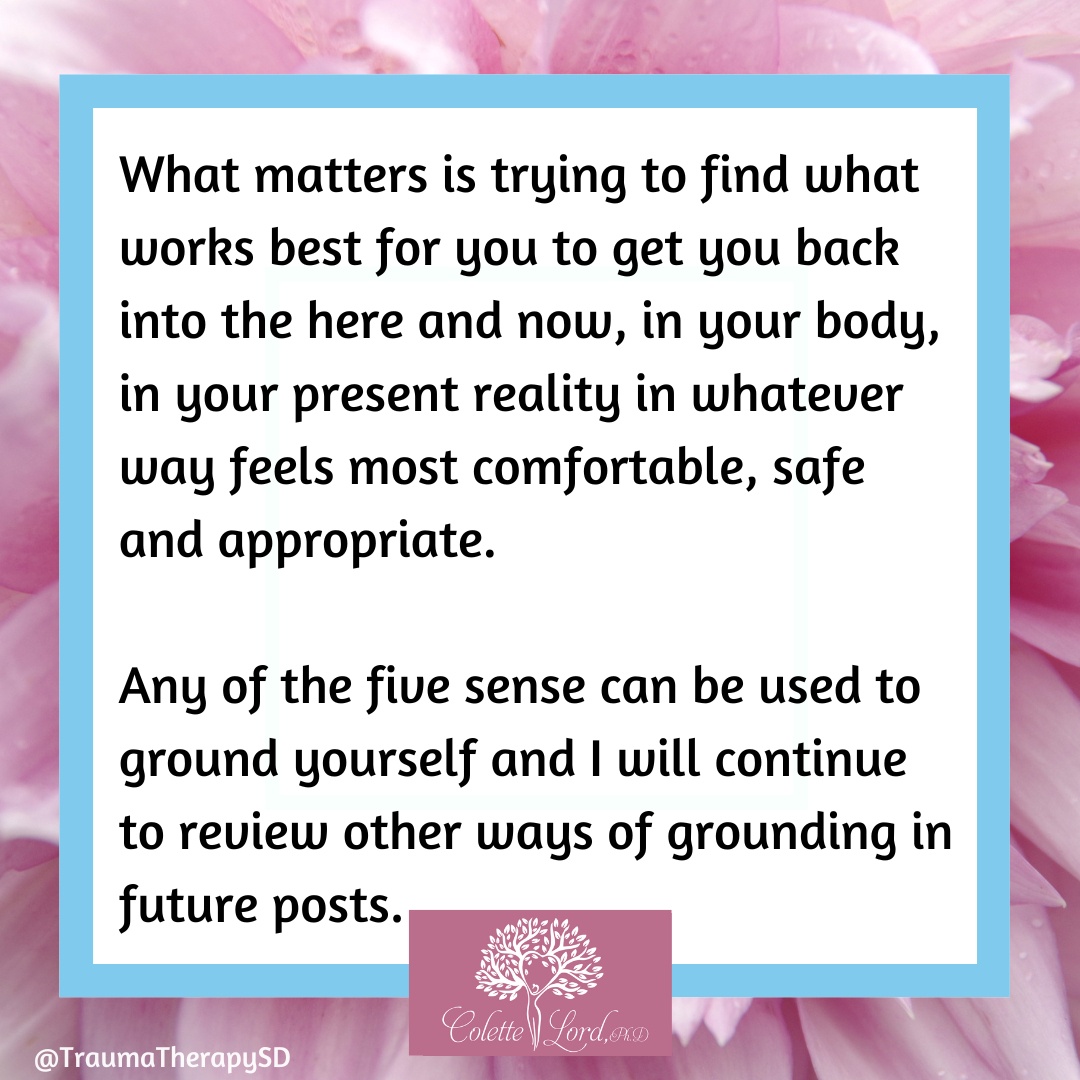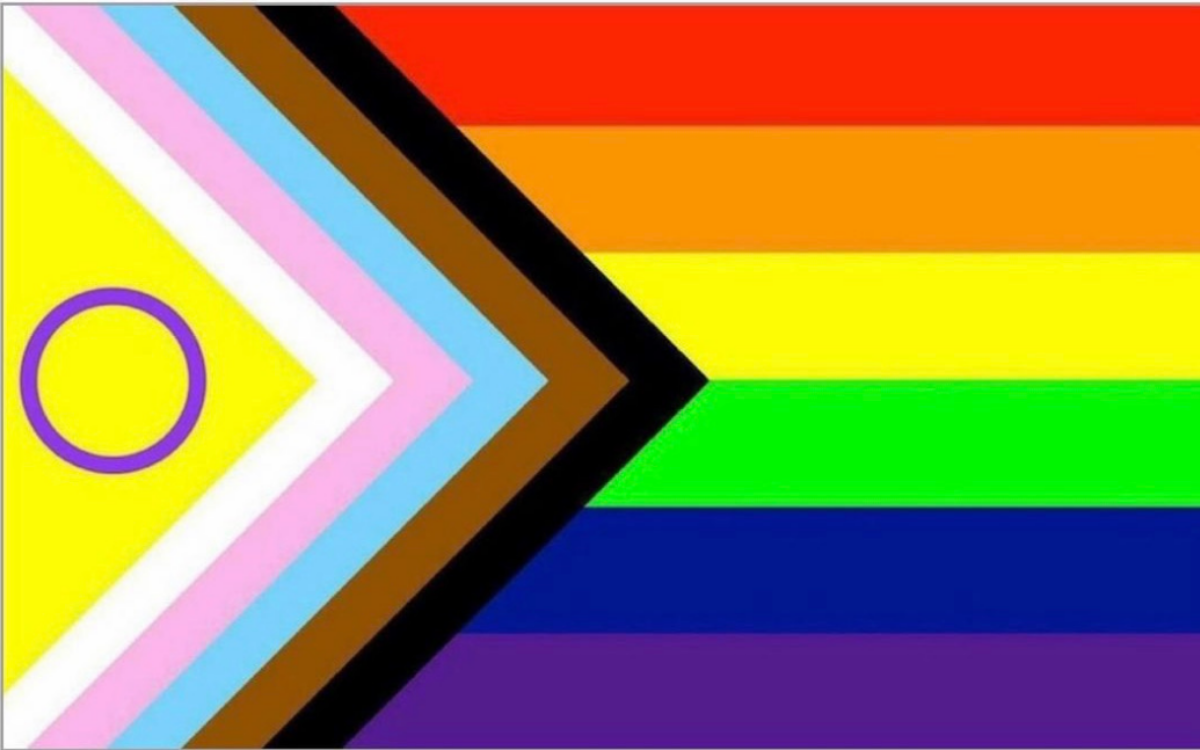Grounding
Grounding is a profoundly important coping skill to learn to deal with dissociation in the moment when it’s occurring.
Grounding skills are a set of strategies to help you connect to the reality of the here-and-now when you are feeling disconnected from yourself, your body, your thoughts, etc.
It can be a useful skill for when triggers bring you into the past, a feeling of being there-and-then in the traumatic moment.
These skills can help remind us that we are safe in this present moment.
The classic example of grounding is literally connecting to the ground beneath your feet.
So, take off your shoes and walking on the ground (get it? grounding?) and let yourself just notice what the ground feels like beneath your feet. It’s even better if you can connect to natural ground, earth, sand, grass, etc. Really get into noticing how it feels on your feet, noticing the textures and the differences as you take a step from one place to the next.
Notice where the weight of your body falls, is it on your heels? Or your toes? Or if standing and walking are not possible, can you notice where the weight of your body is positioned in your seat? Move your body around where you are positioned and notice that.
If that is painful or uncomfortable then this form of grounding may not be for you. So can you feel/notice the textures of what you are wearing, and how that compares to the texture of what you are seated or laying on.
You can alternate sitting back on your heels and then going up on the balls of your feet and notice the difference in how those two things feel to your feet and your body. Similarly when sitting you can dig your heels into the ground and alternate that with scrunching your toes.
What matters is trying to find what works best for you to get you back into the here and now, in your body, in your present reality in whatever way feels most comfortable, safe and appropriate. Any of the five sense can be used to ground yourself and I will continue to review other ways of grounding in future posts.


